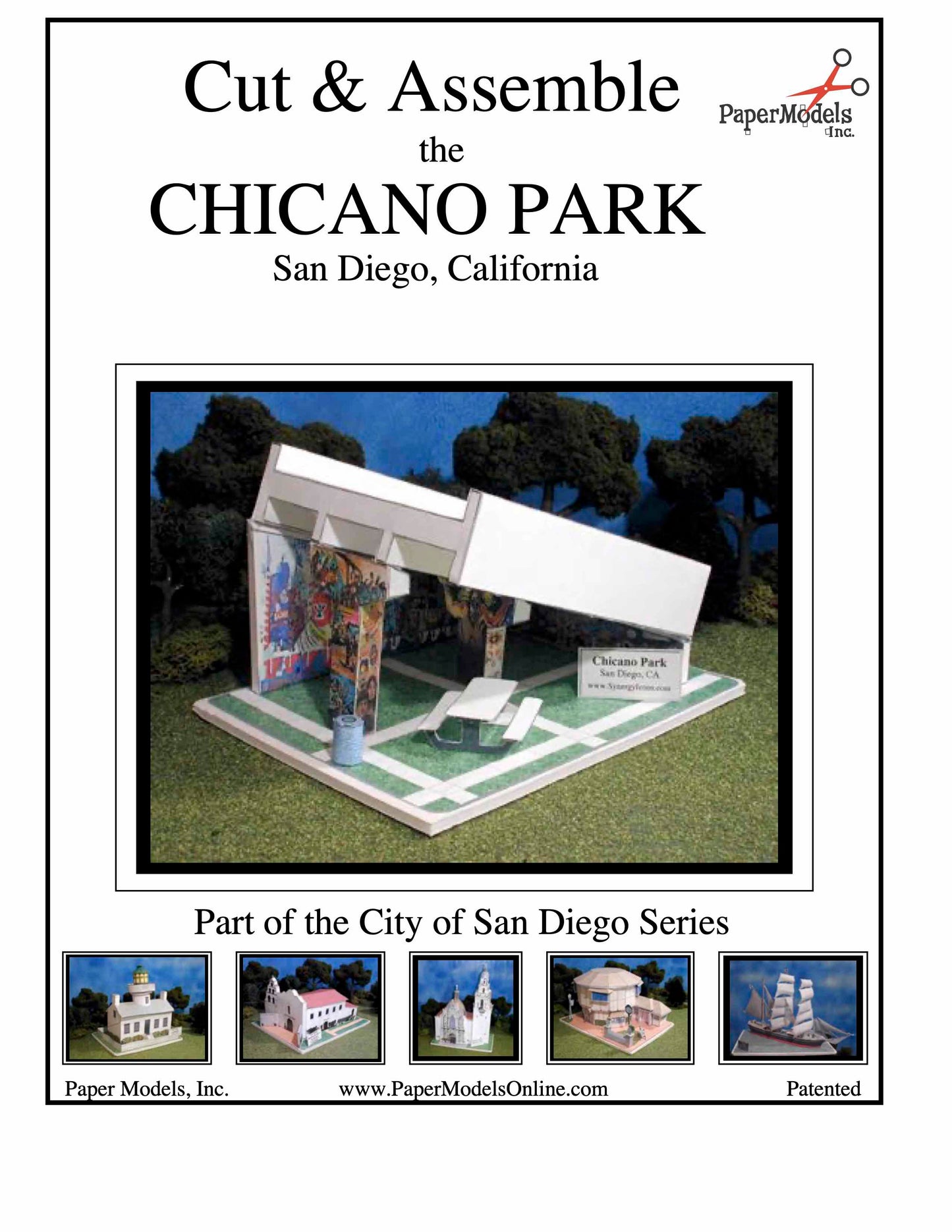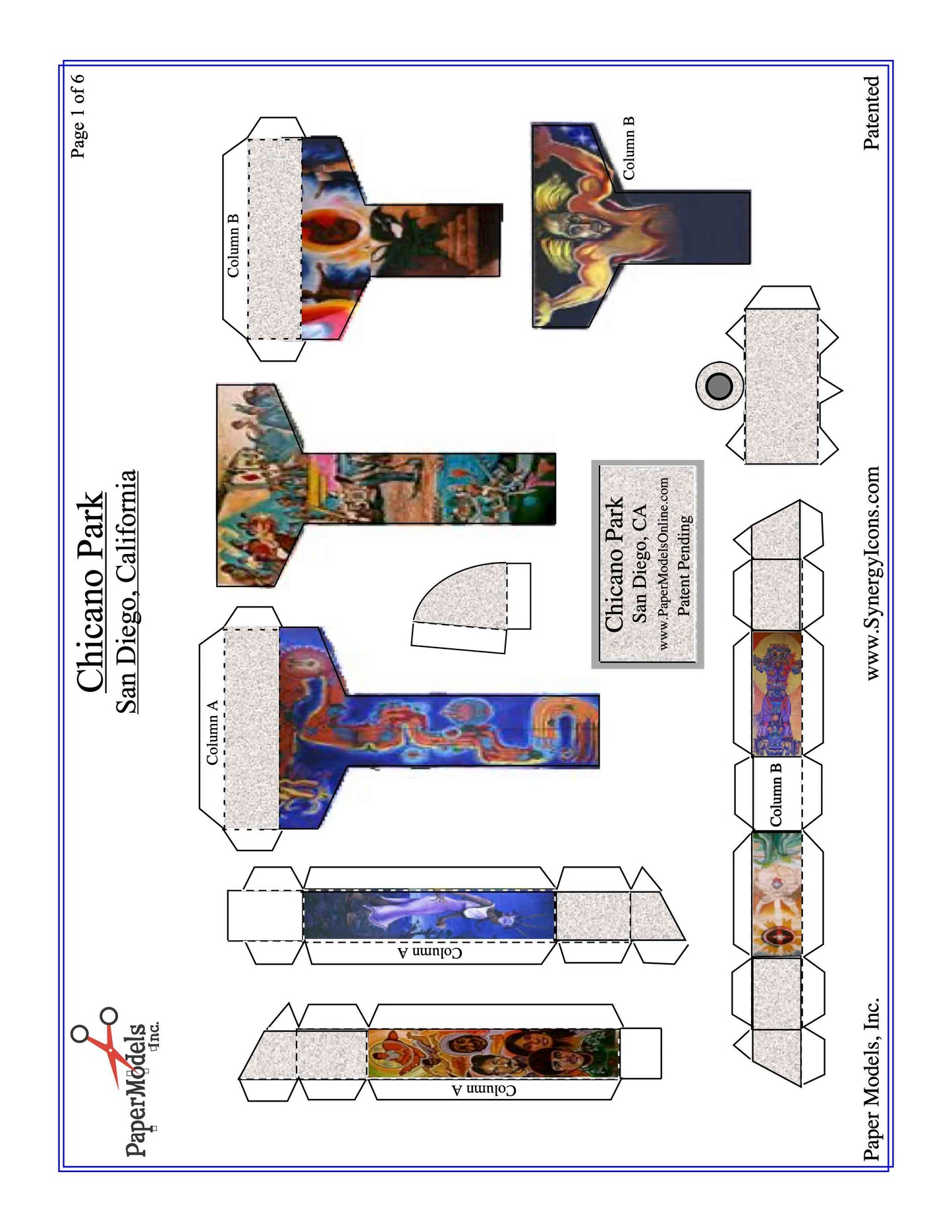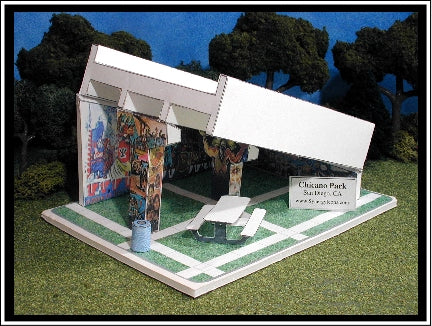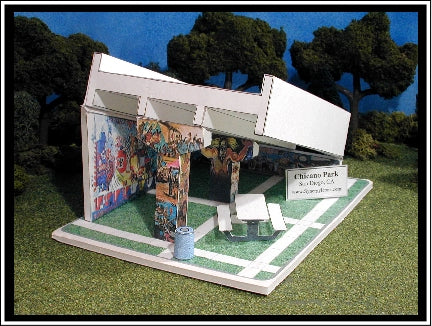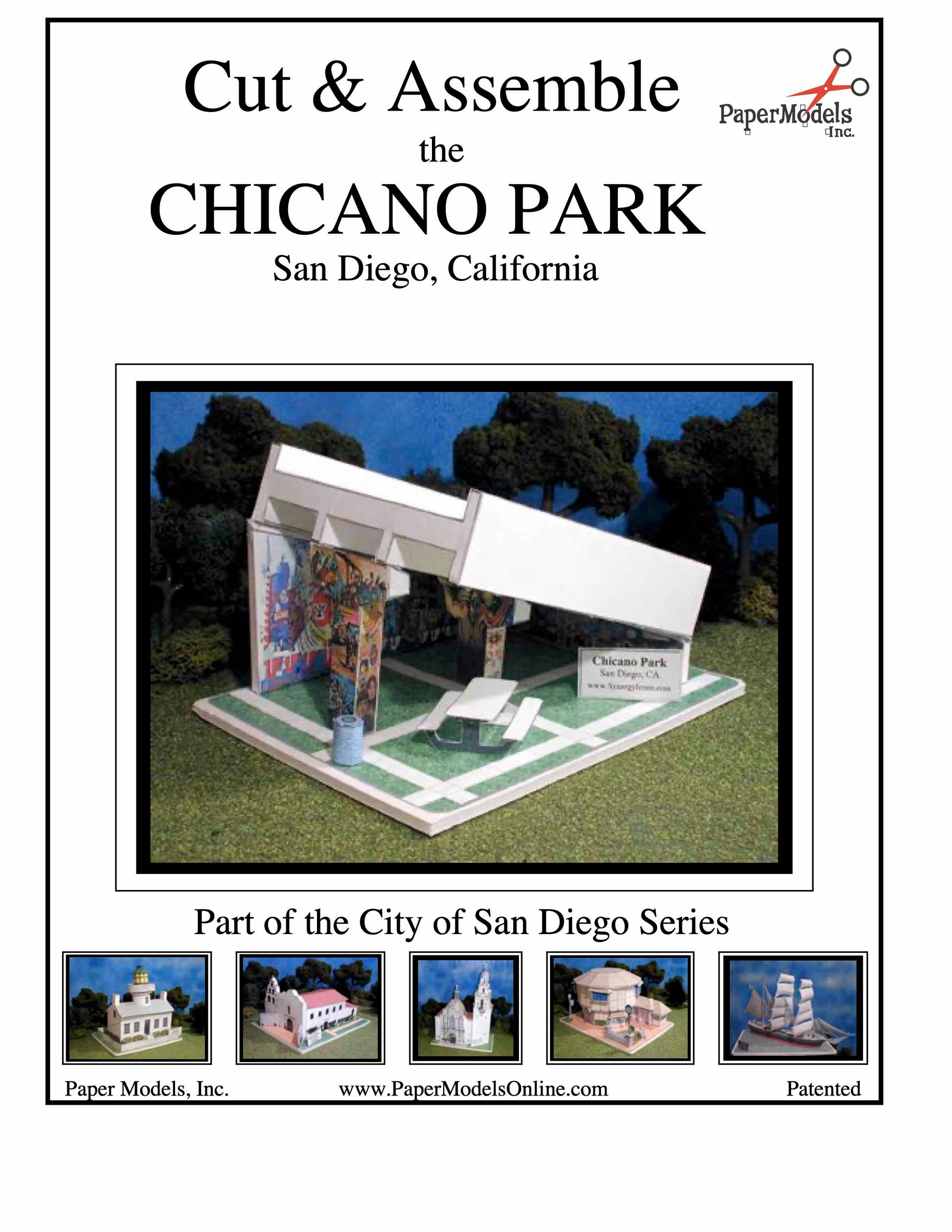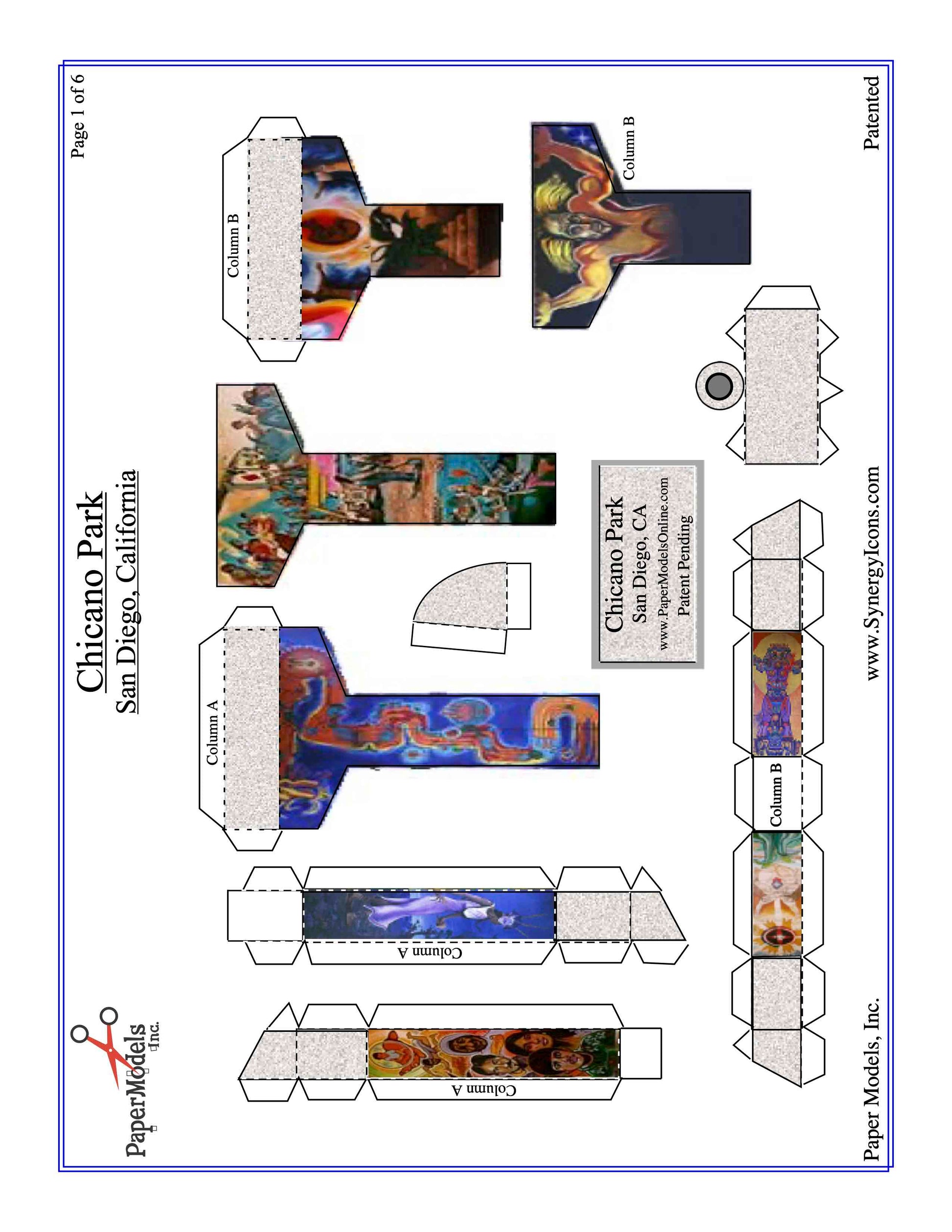Chicano Park, San Diego - Photorealistic - Paper Model Project Kit
Chicano Park, San Diego - Photorealistic - Paper Model Project Kit
Couldn't load pickup availability
Download Instructions Here
🌟 Welcome to Paper Models Online – Your Shortcut to Academic Excellence! 🌟
Are you tired of stressing over last-minute school projects? Look no further! Paper Models Online is here to make your academic life a breeze.
🚀 Why Choose Us?
At Paper Models Online, we understand the pressure of looming deadlines and the desire for that coveted "A" grade. That's why we've crafted the perfect solution for you! Whether you're a student aiming for extra credit, a parent looking for quality time with your kids, or just someone in need of a break from the chaos, our paper models are your ticket to success!
💻 Instant PDF Download OR Pre-Printed & Shipped
You're in control! Choose from our instant PDF download, starting at just $9.95 for the 7"x10" size or $11.95 for the 10"x13" size.
Print it on your home or office printer using regular paper, or opt for the hassle-free pre-printed option. We'll ship it directly to your doorstep for a flat $5 fee via USPS First-Class Parcel, ensuring you get it in 1-3 days!
✂️ Easy Assembly, Maximum Impact
With just a pair of scissors, some glue, and an hour of your time, you can turn these paper sheets into stunning three-dimensional architectural replicas or complete science projects. The images on our website are real models made from our kits, and we even provide a history to help you craft an impressive report.
🎨 Unleash Your Creativity
Not into mission kits? No worries! Our models double as templates for your creative genius. Paint, trace, adjust sizes—your imagination is the only limit! Create a custom masterpiece that reflects your unique style and personality.
🛒 The Buying Process Made Simple
- Choose Your Size: 7"x10" or 10"x13"
- Choose Your Delivery: Instant PDF download or pre-printed and shipped
- Purchase Your Model: It's that easy!

📦 Typical Kit Sample
Each kit includes 8 to 18 pages, providing everything you need to bring the model to life. An "exploded view" guides you through assembly, and a complimentary history adds that extra touch for your report. Impress your teacher not just with creativity but also with your research skills!
Don't let deadlines stress you out. Choose Paper Models Online for your next school project, and let us be Your Best Way To Get An "A"! 🌟
 |
 |
 |
| Exploded View | Sample Pieces | Finished Model |
Chicano Park Named National Historic Landmark
San Diego Union Tribune - January 12, 2017
 |
By Gary Warth Contact Reporter |
Chicano Park, a symbol of community and Latino activism for decades, has been designated a National Historic Landmark.
U.S. Interior Department Secretary Sally Jewell made the announcement Wednesday for the iconic, colorful 7.4-acre park below the San Diego-Coronado Bridge that has had social, cultural and political significance in San Diego and beyond since the 1970s.
“I think there’s no place like it in the country where you can walk through and see the culture and history of a community,” said San Diego City Councilman David Alvarez, whose district includes the Barrio Logan park.
“People know about Chicano Park, not just in San Diego or California, but really the country,” he said. “This is a very unique collection of art that doesn’t exist anywhere else.”
Josephine Talamantez, who participated in the protest that led to the park, submitted the application for its recognition as a national landmark in 2015.
The listing, she said, “is a validation to the Chicano-Latino- indigenous community of the San Diego/Tijuana border region and the nation as a whole. This commemoration recognizes the local Chicano community’s efforts at self-determination.
“We defined and honored our contributions towards the building of the city of San Diego — economically, socially, politically, and culturally,” she added.
Talamantez, now a member of the Chicano Park Steering Committee, was among many people who were frustrated decades ago, watching their neighborhood disappear.
By the time the San Diego-Coronado Bridge opened in the summer of 1969, the development of Interstate 5 had left 5,000 homes and businesses destroyed in Barrio Logan
When the California Highway Patrol announced plans to build a substation below the bridge in 1970, area residents staged a 12-day occupation of the park.
Talamantez, then 18 years old and a City College student, was part of it.
"People were just tired of being complacent after the eminent domain loss of families and communities,” she said in an interview Wednesday. “The elders in the community started asking for a park, and nobody was listening.
"We stood there and locked our hands and blocked the tractors, and we stayed there for 12 days."
The Chicano Park Steering Committee was formed to negotiate with city and state officials and the group has been stewards of the park ever since.
Talamantez said discussions about artwork in the park began around 1973 and a “mural marathon” was organized by Victor Ochoa, who recruited painters.
Among the artists was Salvador Torres, who saw the tall T-shaped pillars supporting the bridge as blank canvases.
“He became the visionary who thought, ‘Wouldn’t it be wonderful to create murals and bring colors to the neighborhood?’” Talamantez said.
Artist Mario Torero, who also had been part of the occupation, painted many of the murals in the park.
In all, there are 49 paintings in the park, many depicting Aztec divinity, legends, Mexican colonialism, and other images.
Talamantez and Manny Galaviz, a volunteer with the steering committee, submitted an application to have the park listed on the National Register of Historic Places and it was added in 2013.
The two also submitted an application to have the park named a National Historic Landmark. In May, Talamantez traveled to Washington, D.C., to make a case for Chicano Park before a review and advisory committee.
The National Park Service Advisory Board approved the recognition in November. Jewell signed off on the recognition Dec. 23, Talamantez said.
Galaviz said the designation is truly unique.
“The inclusion of Chicano Park as a National Historic Landmark is important because today less than 8 percent of the 2,500 National Historic Landmarks represent ethnic and minority groups,” said Galaviz, a University of Texas graduate student. “This does not indicate that ethnic minorities have not contributed to the making of the United States; rather it is reflective on the limited access these groups have had towards claiming, conserving, and preserving their social history.”
The recognition as a National Historic Landmark is considered more prestigious than the National Register of Historic Places, which has about 90,000 properties.
As part of the criteria for a National Historic Landmark designation, a site must tell stories that are important to the nation’s history rather than just local communities or states.
Rep. Juan Vargas, D-San Diego, had introduced bills supporting the designation, but none had passed Congress before the announcement.
“The designation of Chicano Park as a National Historic Landmark is incredible news for the community of Barrio Logan in San Diego, the future of the park, and the many activists who throughout the years have advocated for a space where families can gather and where people can celebrate their shared cultural heritage,” Vargas said in a statement Wednesday.
Chicano Park will join 16 other National Historic Landmarks in San Diego County, including the Hotel del Coronado, Balboa Park, the Mission Beach roller coaster, the Star of India and the San Diego Presidio.
Most recently, the Maritime Museum’s steam ferry Berkeley was named a National Historic Landmark in 1990.
Alvarez said he’s not sure when a plaque marking the national recognition would be installed, but he expected the honor would be be part of the 47th annual Chicano Park Celebration planned in April. Alvarez said he would consult with the Chicano Park Steering Committee about how to celebrate the recognition.
“Personally, this has been my park since forever,” said Alvarez, who grew up in the neighborhood. “I’ve seen it go through a lot. I wasn’t there for the struggles in the 1970s, and we owe a lot of respect and honor to the people who ensured that it would be a park to begin with.”
Chicano Park was among 24 sites named National Historic Landmarks on Wednesday.
# # #
Free History And Photographs For Your Report
Chicano Park San Diego, California
Excerpts from a history by Kathleen L. Robles
Barrio Logan, is found in southeast San Diego. At one point in its history, Logan Heights had contained the second largest Chicano Barrio community on the west coast, with a population of almost twenty thou- sand. On November 9, 1969, the 1.8 acre-parcel of state land in Barrio Logan became a neighborhood park.
An artist, Salvador Torres, in a speech, expressed his vision of local Chicano painters and sculptors turn- ing the bridge pylons into things of beauty, reflecting the Mexican-American culture. Local Chicano art groups, Los Artistas de los Barnos, Los Toltecas en Aztlarz and El Congresso de Artistas Chicanos en Aztlan, had established themselves in San Diego between 1968 and 1972. Salvador Torres, an artist and resident of Barrio Logan, had been a member of the two previous groups, and had organized the third. He is generally referred to as the architect of the dream of Chicano Park.
The Chicano Park Monumental Public Mural Program was conceived by Torres in 1969. Chicano artists wanted to express their identity as Indian / Spanish / European / American. The paints were all laid out. And there's this gigantic wall there, and all of U.S. just looking at this wall. So we pour out the paint, took some rollers, and attacked the wall with the rollers. We put color everywhere. There was at least two or three hundred people there, that all of a sudden were all over the walls. It was done spontaneously. We exploded on the walls. At this early stage of the mural program, community involvement was impor- tant in obliterating the grayness from their park.
In 1980, Chicano Park was designated San Diego's Historical Site #143. Chicano Park is historically sig- nificant for the controversy created by its development and because it is a significant representation of an era in the development of the City. The Chicano Park Murals Committee was, founded in 1989 for the restoration process. The original artists would be contacted and offered the designated amount of funding for the specific mural If the original artists chose not to participate, they were allowed to select artists of their choice to complete the process.
If the original artists did not choose others to work, then other artists would be allowed to submit propos- als for evaluation Scaffolding would be set in place, and concrete surfaces would be washed and cleaned. Techniques and materials would be evaluated to prepare damaged surfaces. Sandblasting, scraping, and sanding would remove surface paint. Damaged areas would be repainted or retouched. Restoration work began on the first ten murals in August, 1991.
The restoration process served to bring official city recognition to the Chicano Park Murals and the Chicano artists involved. In June of 1992, the Commission for Arts and Culture issued a press release regarding the completion of the restoration process of eleven murals. With 41 gallons of paint, 64 brush- es, nine gallons of varnish, and a ton of 'elbow grease' the first phase of the process had been completed on "what is considered the largest, most important collection of outdoor murals in the country."
Copyright © Paper Models, Inc.
Share


